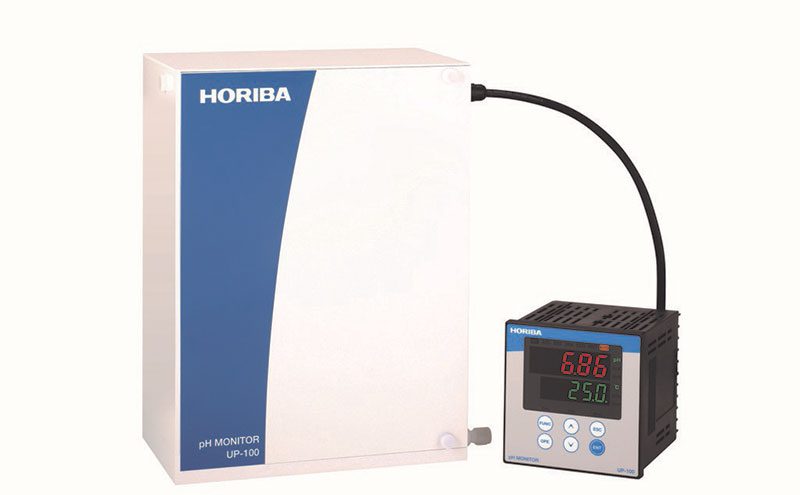
Instrumentation firm Horiba has introduced the UP-100, a micro-volume in-line pH monitor aimed at application areas such as bio reactors, food and drink processing, and pharmaceutical and chemicals manufacturing.
The unit is programmable, self-calibrating and able to provide continuous operation without user intervention for up to six months.
When connected to a storage vessel containing – or a pipe conveying – a liquid product for which the pH level must be monitored, the UP-100 is able to take a small sample (only 0.5mL), as frequently as once per minute if required, determine its pH level and then dispose of the tested sample; in this way it eliminates any risk pf product contamination.
Stuart Knight, director of HORIBA UK, comments: “Many industrial processes require continuous pH monitoring. Even if a reading can be taken in just 10 minutes, that equates to about 60 hours when extrapolated over the course of a year, assuming only one sample per day. The UP-100 is therefore a cost-effective aid to any process that requires frequent pH monitoring for data acquisition and/or control purposes.”
The UP-100 covers the full pH range of 0 to 14 and comprises two parts; a sensor unit and a controller. The sensor unit includes a pH sensor, a pump, two reference solutions (needed for auto-calibration) and a potassium chloride solution for the automatic replenishment of the pH sensor’s glass electrode. The controller, which connects to the sensor unit via a 5m cable as standard (with other lengths available), can be programmed via a simple user interface. The controller also displays the pH level of the most recent sample (or the electrode’s voltage if preferred) and its temperature in ºC.
The controller also has an RS-485 connector for data I/O allowing it to be programmed remotely. In addition, there is an analogue output (industry standard 4 to 20mA) proportional to the most recent pH reading, allowing the UP-100 to connect directly to a PLC or alarm.
The monitor has a repeatability figure of ±0.1pH when calibrating against its internal pH4 buffer and a stability of ±0.1pH per hour. Horiba says the device saves money as it only requires a small sample to give an accurate reading.






